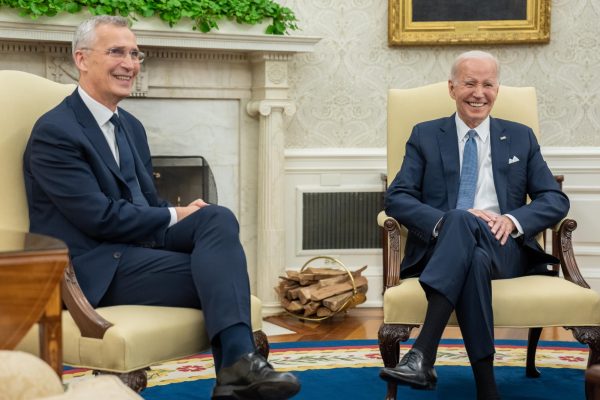How media covers suicide in the U.S.
The media walks a fine line in covering suicide and its startling statistics
The CDC’s headquarters in Druid Hills, Ga. The CDC is one of many organizations tracking suicide statistics and offering methods to prevent suicide.
April 23, 2016
Each year in the U.S., 42,773 Americans commit suicide, according to the American Foundation for Suicide Prevention. Further, this is an average of 117 suicides per day, according to AFSP. It is also the second-leading cause of death for people between the ages of 15-34, per the Center for Disease Control and Prevention (CDC). Also, the AFSP reports that the annual suicide rate is 12.93 per 100,000 individuals.
According to the CDC, one death by suicide occurs every 12.3 minutes in the U.S. This rate lends itself to sometimes intense media coverage, and it is the responsibility of the media to provide correct information and to be careful with their coverage of a sensitive incident – especially with a high-profile incident like the one at Independence High School in Glendale on Feb. 12, when two teenagers were involved in a murder-suicide.
Even though people are curious about suicide and the questions surrounding why it happens with such frequency, most news agencies are aware that they must be careful when reporting on suicide. There is a certain accountability for reporters and broadcasters and they must be mindful to use the correct language and to present resources for other people in the community who may be struggling.
“Language is very important,” Jennifer Kuhn, a Communication Specialist for Arizona-based organization Teen Lifeline said. “Use phrasing like ‘died by suicide’ instead of ‘committed suicide’ to help eliminate the stigma of suicide.”
Lori Monroe, a 51-year-old full-time student at SCC, is saddened by the suicide rate and believes the media sometimes oversteps its bounds when covering these tragic events.
“I think the media goes too far,” Monroe said. “They want to blow it up. The media, in knowing how to report on suicide, can build a stronger community that encourages help-seeking behavior and provides hope to those that feel like they are alone. “
“When it comes to reporting on suicide, there are ‘best practice standards’ that have been developed by leading experts in the mental health field,” Kuhn said. “Media must learn how to handle stories that deal with suicide. ‘Contagion’ is a very real thing, and depending how the media handles stories that deal with suicide, it can influence negative behavior.”
Monroe said in the old days media was all about facts and about truth, but now believes the media is just out to stretch the truth.
“Media creates depression and sticky little fingers involved in everything and contribute to lost hope and trust,” Monroe said. “Media always exaggerates the damage, they add insult to injuries. I think they deepen the scars, especially with these families with these girls being handled like that’s being embraced like it scrutinizes and being judged, it is not a good thing.”
According to the Arizona Suicide Prevention Coalition website, suicide, the act of taking one’s own life, is a leading cause of death in Arizona. Approximately 800 people die from suicide in Arizona each year. The number of suicides in Arizona are double the number of homicides and the state of Arizona consistently ranks in the top ten states in its rate of suicide. With these statistics, it is even more important that statewide media covers suicides in a responsible way.












